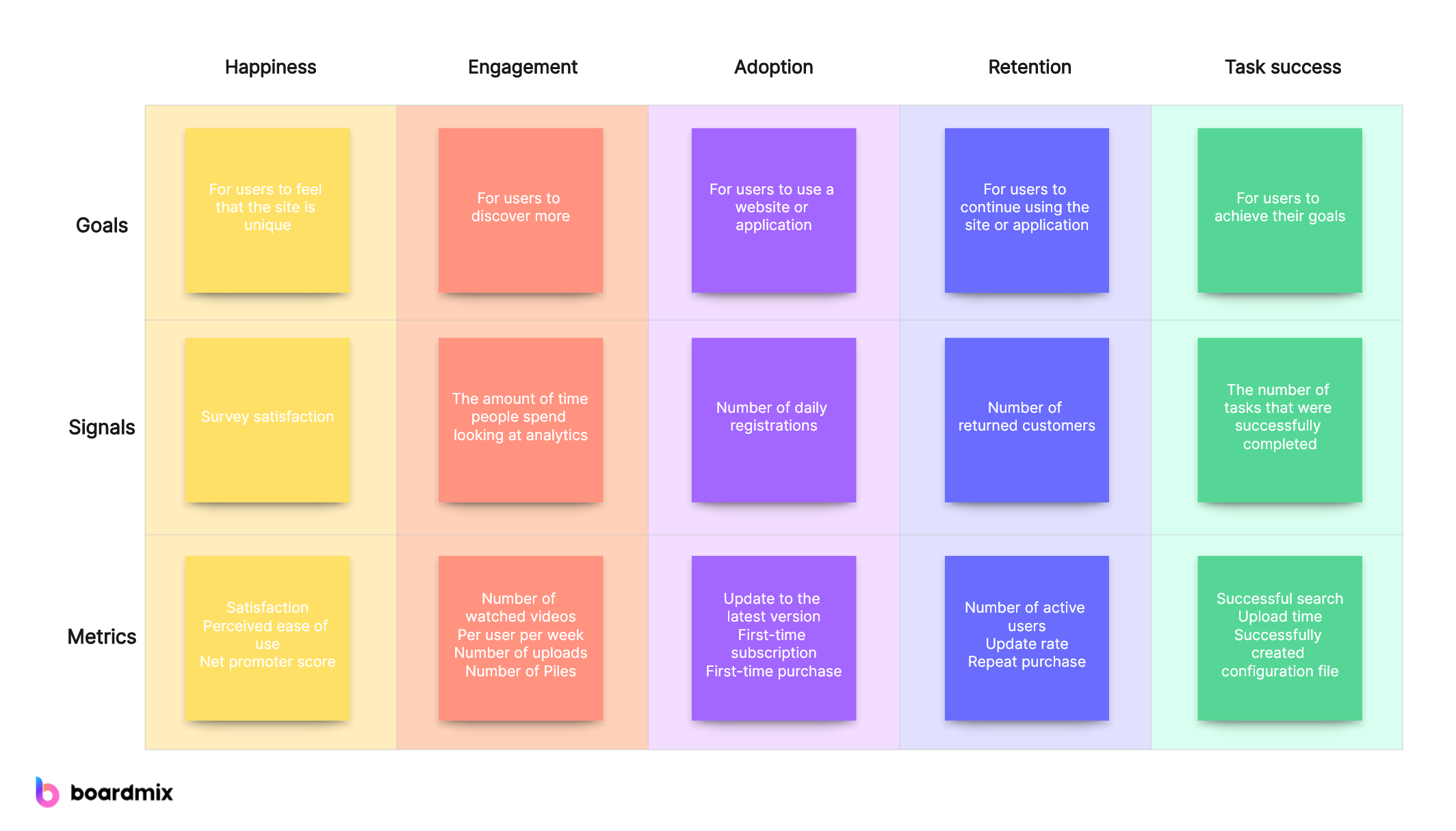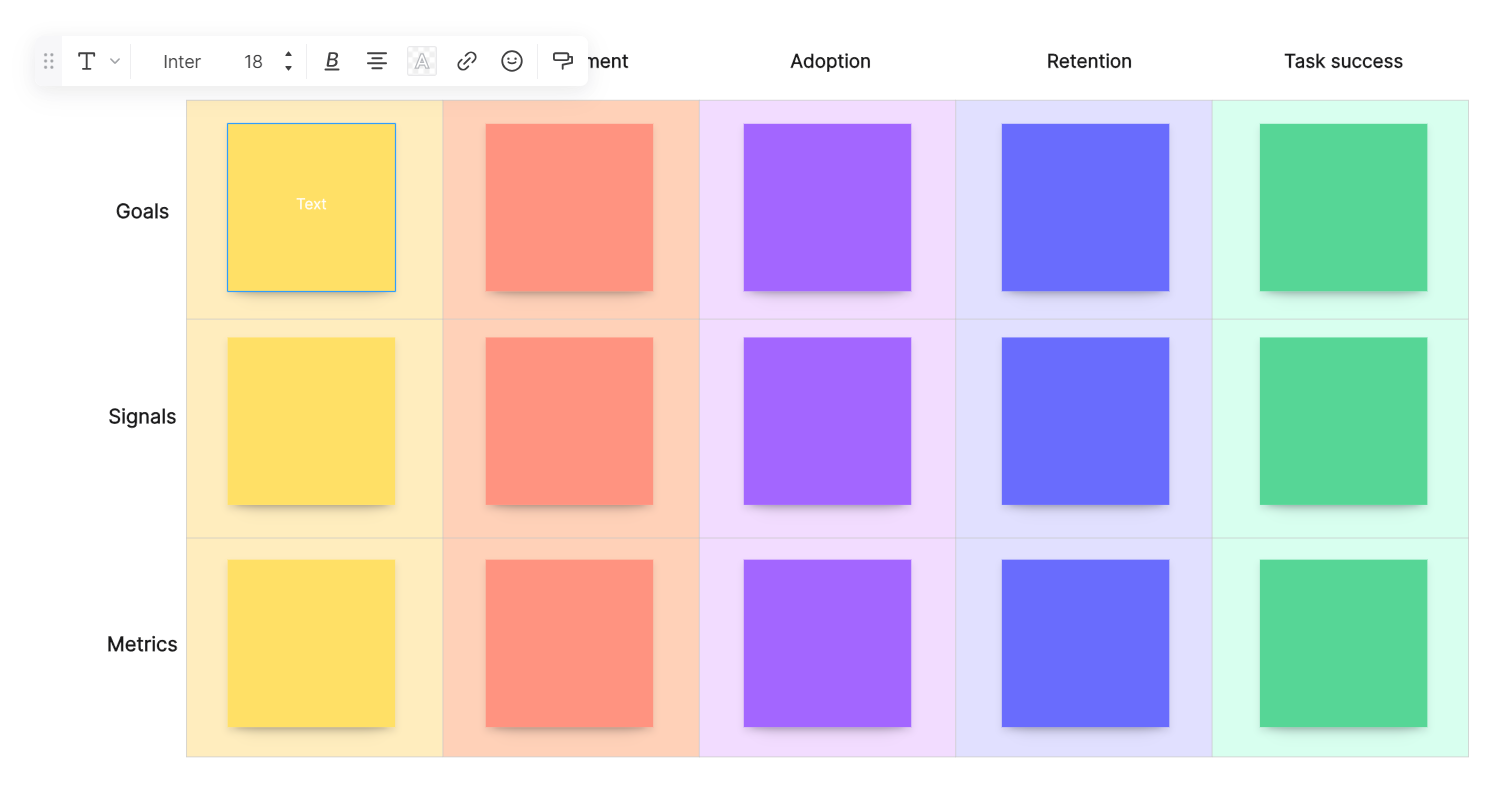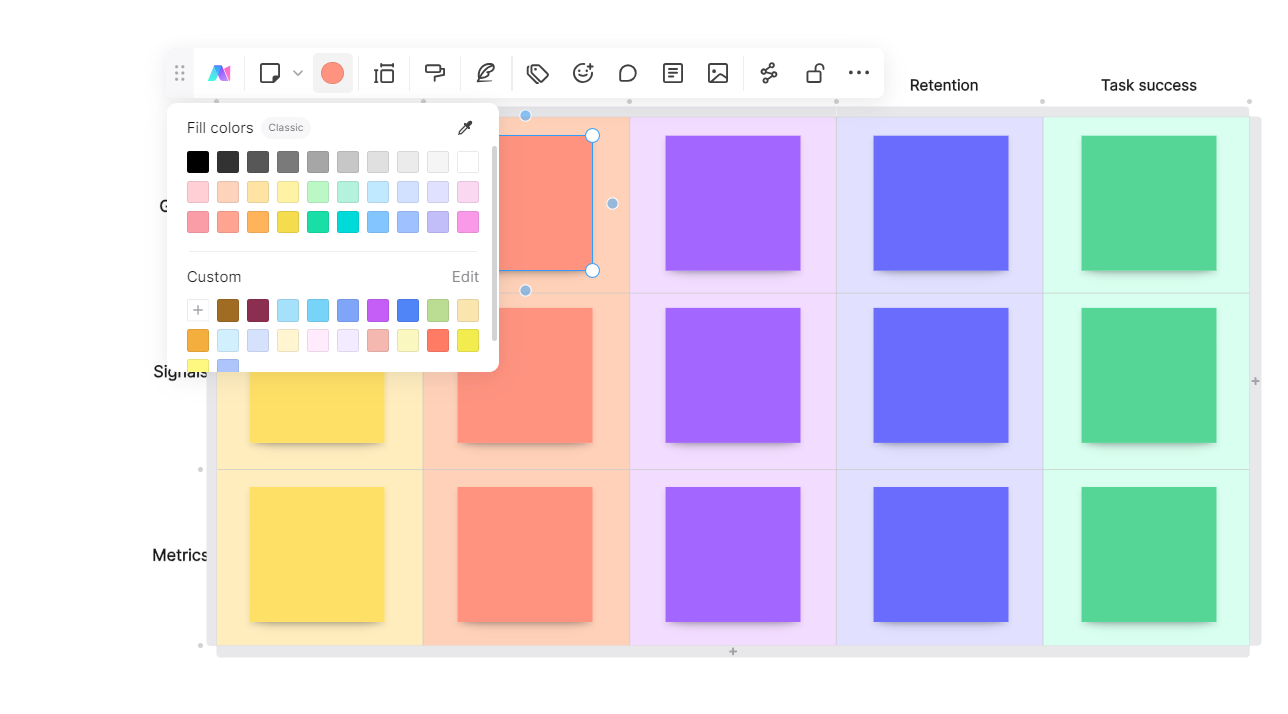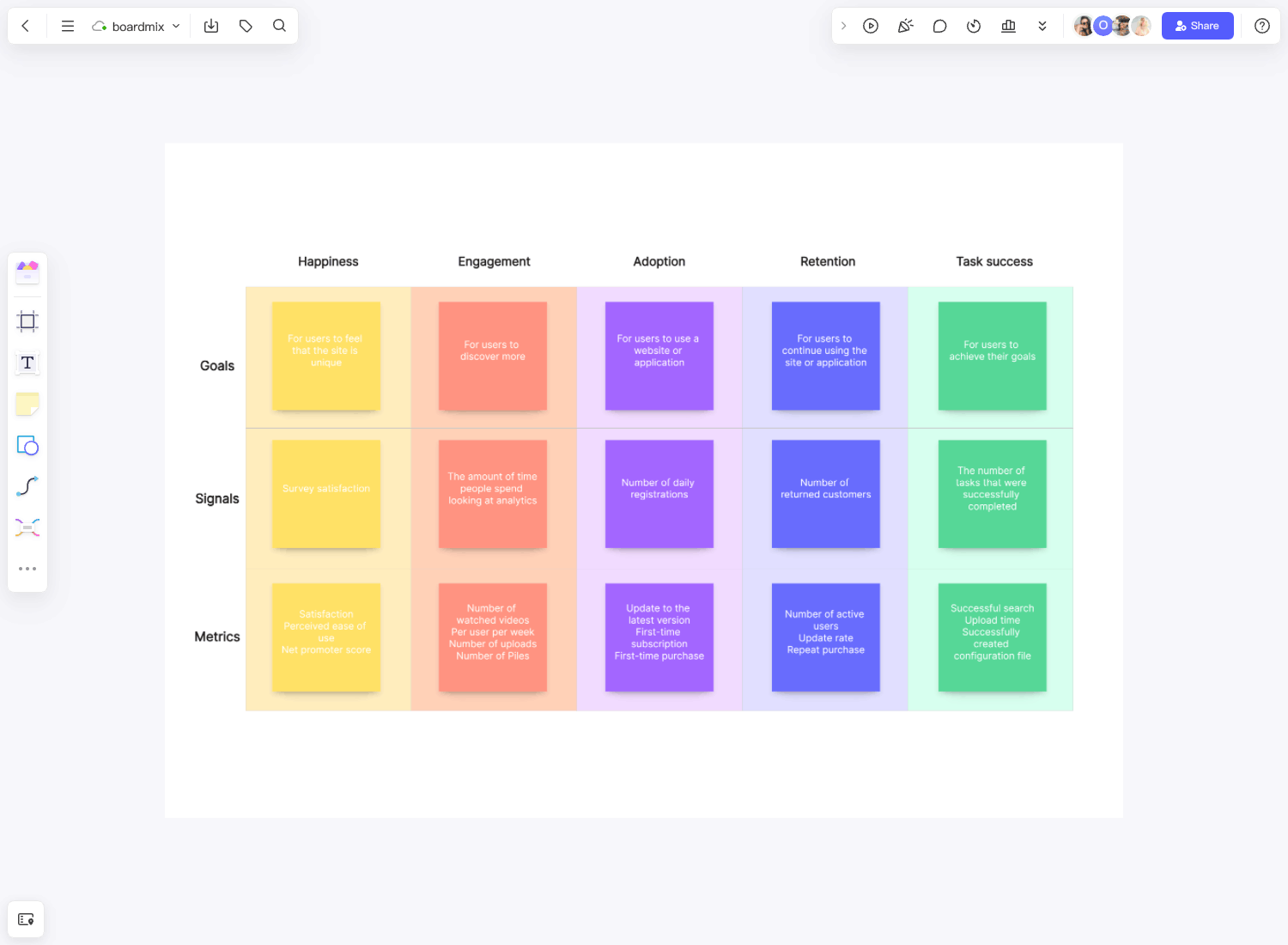In the quest to design and develop new products or services, comprehending the preferences and demands of the target market is of utmost importance. Aligning your offerings with their needs, desires, and emotions is the key to capturing their loyalty and building strong relationships. Among the array of methods available, the HEART framework shines as a dependable and time-tested approach for understanding market dynamics. By integrating this approach into your market research and product development, you can confidently cater to your customers' expectations, elevate user satisfaction, and strengthen your brand's competitive edge in the market.
What is the HEART framework?

Build HEART Framework for Free
The HEART framework is an established method for providing an elevated user experience of your products or services. It is often applied to software design, although it is certainly relevant to other industries as well.
What does HEART stand for?
HEART is an acronym for the five key metrics that are vital to providing a user-centered product or service. Each of these is equally important and must therefore be factored in product design and development.
Happiness
User Happiness should never be underestimated, even amidst technical development priorities. Delighting customers with products and services fosters loyalty and positive word-of-mouth, encouraging repeat purchases and brand advocacy. Satisfied customers become key contributors to business growth and success, making it essential to prioritize their experience and satisfaction.
Engagement
Simply having clients use your product for basic needs is not enough. You need to make them as engaged as they possibly can, encouraging them to create habits and routines involving your product. The more engaged they are, the longer you can expect them to use the product.
Adoption
Other frameworks consider acquisition and activation to be two separate areas. However, in the HEART network, they are taken together as the aspect known as adoption. Here, you aim to get users to find out about the product and also to fully comprehend the value that they can get from it.
Retention
For many business owners, customer retention is one of the ultimate goals. Getting a lot of sales is a good thing but getting a lot of repeat customers and building a loyal client base is much better. If your customers repeatedly choose your products or services over similar ones from other brands, then it’s certainly a positive sign.
Task Success
A great product enhances user productivity, making tasks quicker and easier. When it improves the user experience by saving time or simplifying processes, it fulfills its purpose. Success lies in meeting and exceeding user needs.
History of the HEART framework
The concept of the HEART framework is highly prevalent in many industries around the world today, but it all started with Kerry Rodden. Now a user experience (UX) specialist at YouTube, Rodden worked at Google at the time and was the company’s premier UX researcher back then.
He came up with the HEART model to improve the Google UX design team to focus more on the most important user-centered metrics and to use these metrics to create a better user experience with various Google software offerings.
What is the purpose of the HEART framework?
The main purpose of the HEART framework at Google is to create an automated evaluation of user experience, which then leads to some other benefits, especially if the evaluation is done regularly.
Today, it is used in many industries to identify areas of improvement when it comes to all kinds of user experience. It is very useful for quantifying user experience and serving as a guide for better product development.
How to build a HEART framework
Building a HEART Framework is quite easy because the key metrics and the verticals are already clearly defined. If you use a good HEART framework template, the process can even become much simpler. The template that we have here at Boardmix is not only organized and well-designed, but it also comes with a pleasing color layout that makes it more interesting and effective.
To construct an effective HEART framework, systematically address each of the five areas, defining its goals, signals, and metrics. For the Happiness aspect, consider questions like what factors contribute to user happiness, how can you detect signs of their satisfaction, and what measurements can quantify this happiness. By methodically exploring these questions, you can create a comprehensive and insightful HEART framework that enables better assessment of user experience.
Step to create HEART framework in Boardmix:
Step 1. Start by opening Boardmix and selecting a new blank canvas or choose from one of the many pre-designed templates.

Step 2. Define your Goals: Use the text tool to write down your product's key goals. These could be improving user experience, increasing engagement, etc.

Build HEART Framework for Free
Step 3. Identify Signals: For each goal, identify signals that indicate success or failure. Use different shapes or colors to distinguish between positive and negative signals.

Build HEART Framework for Free
Step 4. Determine Metrics: For each signal, determine the metrics you'll use to measure progress. You can use arrows or lines to connect these metrics to their corresponding signals.

Step 5. Collaborate & Refine: Invite team members to join the board and collaborate in real time. They can add comments, make suggestions, or even draw their elements on the board.

Step 6. Track Progress: Regularly update your HEART framework with actual data and track progress towards your goals over time.
Verticals of the HEART framework
Earlier, we have already described the key metrics of the HEART framework. For each of these areas, three elements must be identified, also called the verticals of the framework.
Goals
The objective must be clearly defined, as this is the picture of what we should strive for when working on that particular area. Begin with a general goal and gradually break these down into smaller, more attainable goals.
Signals
These are signs that indicate the level and quality of success of the users in achieving the goals that you have listed for them. It is vital to identify and watch out for these signs because if they exist, they will indicate that you are achieving success yourself. Clear signals also make for better assessment and evaluation.
Metrics
These are the tools used to measure the success, or the lack thereof, in each of the areas of the framework. For areas that are not easily measurable, and there are many of these in the field of product development, you need to use a proxy that you can also use as a metric.
FAQs about the HEART framework
Who should use the HEART framework?
The HEART framework is valuable for product development teams and anyone aiming to enhance user experience across products or services.
What are the benefits of the HEART framework?
The utilization of this framework offers businesses numerous advantages, such as acquiring dependable business intelligence, emphasizing crucial aspects of user experience, making well-informed decisions regarding future investments, and much more. By leveraging this approach, companies can enhance their understanding of user needs and preferences, leading to improved overall performance and success.







